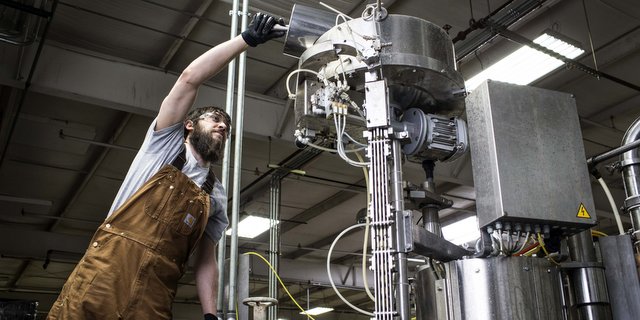
Personal liquidity, investor raised capital, commercial bank financing – there are several financing options when starting or expanding your brewery or distillery, and you may find yourself overwhelmed with the choices. While all of these options can help you obtain the necessary capital to achieve your goals, you may find that not all will be available to you in your personal situation. Instead of allowing financing to be an obstacle between you and your dreams, consider an SBA loan.
For those eligible, Small Business Administration (SBA) loans are an attractive financing option because of the government guarantee. As such, lenders are more inclined to approve these loans, and borrowers who receive them often benefit from lower equity requirements and more flexible terms.
SBA loans are one of the most popular financing options for first-time brewery owners, but because of the government guarantee, you will encounter additional paperwork and information required. Before connecting with a potential lender, familiarize yourself with the process and best tips for navigating it as smoothly as possible.
Step 1: Application
Your lender will have very specific asks during the application process, and it’s best to be prepared. Crucial first pieces are your business plan, with reasonable projections and assumptions, and information about your personal finances. You will also need to complete the application that is required by your lender.
You may be asked to provide a management profile that details which of your team members will oversee various sections of the business, like managing the taproom, brewing the beer or making the spirits.
You may also be asked to answer questions about the location you have selected. Are you planning to set up shop in a high traffic retail area or an industrial park? Are there multiple breweries or distilleries around you, or do you have the advantage of being the only one? Is there room for expansion? Demographic details are crucial to the funding you may receive, and it helps to be as specific as possible.
To avoid delays, make sure you have a location selected, a letter of intent for lease or purchase and a complete business plan before approaching a lender. Navigating the application process can be time consuming and tricky, and being prepared with these items ahead of time can keep things moving.
Step 2: Underwriting
Once all the required information for your application has been received, the underwriting process can begin. During this time your lender will complete a thorough review of the information you provided to determine your strengths, weaknesses and loan eligibility.
Be prepared for your lender to give you a phone call to further discuss your business plan, owner management experience, projections and assumptions. Your projections and assumptions will be heavily scrutinized, so accurate and comprehensive documentation is crucial. If your predictions are not clear, your lender may ask you to revisit the application to include additional details, potentially setting you back by weeks or months.
Step 3: Closing
At this point in the process you can expect to receive a list of closing conditions that are required before the SBA loan can be closed. Your lender will also schedule a call with you to go through the list of closing conditions and assign responsibility for each requirement. This call is very important as you two will discuss details about your business insurance, construction contracts, architectural plans, federal TTB permit and more.
To avoid delays, decide who you will use for construction-related tasks during the underwriting process. This may include finding a contractor, designer, architectural partner and engineer. Though the process for an SBA loan is longer than that of conventional loans, you can shorten the timeline if you are thoroughly prepared.
Step 4: Funding
Once all of your closing conditions have been met, it is time to close on your loan. You will most likely enter into a multi-disbursement deal in which your funds will be distributed in controlled disbursements as construction on your brewery or distillery progresses.
It is usually best that you work with qualified professionals who have relevant industry experience to complete your construction project. Misinformation submitted by a contractor or anyone else could potentially cause a funding request to be returned, resulting in a delay of the construction process. A skilled team of builders who are experienced in the craft beverage field will prove very beneficial.
Securing financing for your brewery has the potential to be a frustrating experience, but SBA loans are available to help you overcome this hurdle. To maximize your chances of a smooth process, familiarize yourself with these steps and requirements ahead of time, and work with a qualified lender. By being thoroughly prepared and enlisting the help of someone with relevant experience you can obtain the financing you need to begin producing the craft brew of your dreams.
Rick Sayward serves as Vice President of United Community Bank’s Craft Beverage Lending sector.





Leave a Reply
You must be logged in to post a comment.